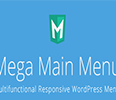Building a Website to Support Your Research or Academic Project

In this digital era, establishing a captivating online presence can greatly enhance the visibility and impact of your research or academic project. The days of relying solely on dusty library shelves for knowledge are long gone. Today, a well-designed website serves as your virtual laboratory, enabling you to showcase your work, connect with your target audience, and make a lasting impression. Let's embark on a journey to discover how to create a website that will captivate your readers and unlock new opportunities for your scholarly endeavors.
Why You Need a Website for Your Research or Academic Project
In a world where information is just a click away, having a website for your research or academic project is crucial. It offers numerous benefits that can propel your work to new heights. Here are a few reasons why:
- Global Reach: A website breaks through geographical barriers, allowing your work to reach a global audience. Imagine your research findings being accessed by curious minds from different corners of the world. The possibilities are endless!
- Credibility Boost: Establishing a professional online presence enhances your credibility as a researcher or academician. It showcases your expertise and enables you to share your achievements, publications, and collaborations, further solidifying your reputation in the field.
- Collaboration Opportunities: Your website serves as a hub for potential collaborations. It provides a platform for like-minded individuals and organizations to connect with you, fostering meaningful partnerships and expanding your network.
Moreover, having a website also allows you to monetize your research or academic project by offering additional resources or services related to your expertise. For instance, you can provide consulting services, sell e-books, or even offer the option to buy research papers, providing valuable resources to interested readers.
Planning Your Website
Now that you understand the importance of having a website, let's dive into the planning phase. Strategic planning is the cornerstone of a successful website. Here are the key aspects to consider:
-
Defining Your Goals and Target Audience
Before embarking on the website creation journey, it's crucial to define your goals and identify your target audience. Ask yourself: What do you want to achieve with your website? Are you aiming to disseminate research findings, attract collaborators, or engage with the academic community? Understanding your goals will shape the design and content of your website.
-
Choosing the Right Platform
Selecting the right platform is vital to ensure a smooth website-building experience. Numerous platforms cater to different needs, ranging from user-friendly website builders like WordPress and Wix to more advanced options like Drupal and Joomla. Consider factors such as ease of use, customization options, and scalability when making your decision.
-
Selecting a Domain Name
Your domain name is your website's unique address on the internet, so choose it wisely. Opt for a name that reflects your research or academic project and is memorable and easy to spell. For instance, if your project focuses on marine biology, a domain name like "DeepSeaDiscoveries.com" could capture the imagination of your audience.
Designing Your Website
Once you have a solid plan in place, it's time to dive into the design phase. Your website's design plays a pivotal role in captivating visitors and encouraging them to explore further. Here are the important factors to take into account:
-
Creating a User-Friendly Layout
A user-friendly layout ensures that visitors can navigate your website effortlessly. Aim for a clean and intuitive design, with logical menu structures and easy-to-find information. Avoid clutter and prioritize a seamless user experience.
-
Choosing a Suitable Theme or Template
Themes or templates are pre-designed layouts that determine the overall look and feel of your website. Explore the vast array of options available, considering factors such as aesthetics, responsiveness across devices, and compatibility with your content.
-
Customizing the Design Elements
Customization allows you to infuse your website with personality and uniqueness. Tailor the colors, fonts, and images to align with your research or academic project's theme. Consider using visuals that resonate with your audience, such as infographics, charts, or photographs.
Developing Content for Your Website
Content is the heart and soul of your website. It holds the attention of your audience and effectively communicates your message. Here are some tips to create compelling content:
-
Writing Compelling Copy
Craft your copy in a way that engages and inspires your audience. Use clear and concise language to explain complex concepts, ensuring that your content is accessible to both experts and non-experts. Incorporate storytelling techniques and provide relatable examples to make your content more engaging.
-
Creating Engaging Multimedia Content
Multimedia content, such as videos, podcasts, and interactive elements, adds an extra layer of engagement to your website. Consider creating short videos summarizing your research findings or recording interviews with fellow researchers. Infuse creativity into your content to leave a lasting impression on your visitors.
-
Incorporating Visuals and Graphics
Visual elements can enhance the impact of your content and make it more digestible. Include relevant images, charts, or diagrams to illustrate your ideas. Visuals not only break up text-heavy sections but also provide a memorable experience for your audience.
Optimizing Your Website for Search Engines
Creating a captivating website is not enough; you need to ensure that it reaches your intended audience. Search engine optimization (SEO) is the key to improving your website's visibility. Here are some essential steps:
-
Conducting Keyword Research
Keywords are the foundation of SEO. Identify the keywords or phrases your target audience is likely to use when searching for content related to your research or academic project. Tools like Google Keyword Planner can help you discover relevant keywords and their search volumes.
-
Implementing On-Page SEO Techniques
On-page SEO techniques involve optimizing various elements within your website. Incorporate your target keywords in your page titles, headings, meta descriptions, and throughout your content. Aim for a natural integration of keywords to maintain readability.
-
Building Quality Backlinks
Backlinks, or links from other reputable websites to yours, are crucial for SEO. They indicate to search engines that your website holds value and is relevant. Focus on building relationships with other researchers, academics, and authoritative platforms in your field to earn high-quality backlinks.
Ensuring Accessibility and Usability
Accessibility and usability are paramount to ensure that all users can access and navigate your website effectively. Consider the following aspects:
-
Making Your Website Accessible to All Users
Ensure that your website meets accessibility standards, allowing users with disabilities to access your content. Incorporate features such as alt text for images, captions for videos, and keyboard navigation options. By making your website inclusive, you broaden its reach and impact.
-
Testing Your Website's Usability
Usability testing involves evaluating how users interact with your website. Conduct user tests to identify any usability issues, such as confusing navigation or slow loading times. Implement the feedback received to optimize the user experience and improve overall satisfaction.
-
Optimizing Website Speed and Performance
Website speed is a critical factor in retaining visitors. Slow-loading websites frustrate users and lead to high bounce rates. Optimize your website by compressing images, minimizing code, and leveraging caching techniques. Ensure that your hosting provider offers reliable and fast servers to deliver a seamless experience.
Security Considerations for Your Website
Security should be a top priority when it comes to your website. Protect your valuable research or academic project from potential threats by following these steps:
-
Choosing a Secure Hosting Provider
Select a reputable hosting provider that prioritizes security. Look for features such as regular backups, SSL certificates, and advanced security measures like firewalls and malware scanning. A secure hosting environment ensures the integrity and confidentiality of your data.
-
Regularly Updating Software and Plugins
Outdated software and plugins pose a significant security risk. Keep your website secure by installing updates as soon as they become available. Regularly check for vulnerabilities and apply patches promptly to safeguard your website from potential breaches.
-
Implementing Strong Password Policies
A strong password is your first line of defense against unauthorized access. Create unique and complex passwords, combining uppercase and lowercase letters, numbers, and special characters. Enforce strong password policies for any user accounts associated with your website.
Promoting Your Website
Creating an engaging website is just the beginning. To maximize its impact, you need to promote it effectively. Here are a few approaches to contemplate:
-
Making Use of Social Media Platforms
Social media platforms offer immense potential for reaching a broader audience. Share your research findings, insights, and updates across platforms like Twitter, LinkedIn, or Facebook. Engage with your audience, participate in relevant discussions, and use targeted hashtags to amplify your reach.
-
Sharing Your Website with Relevant Communities
Identify online communities, forums, or discussion boards relevant to your research or academic project. Actively participate in these communities, share your website, and contribute valuable insights. Building relationships within these communities can lead to increased visibility and collaboration opportunities.
-
Utilizing Email Marketing Strategies
Email marketing allows you to nurture relationships with your audience and keep them informed about your latest research or academic updates. Offer a subscription option on your website and regularly send newsletters or updates with valuable content, inviting readers back to your website.
Conclusion
Congratulations! You've embarked on a journey to create a captivating website for your research or academic project. By defining your goals, selecting the right platform, designing an appealing layout, and developing compelling content, you've set the stage for success. Remember to optimize your website for search engines, ensure accessibility and usability, prioritize security, and leverage various promotion strategies. With these key steps in place, your website will become a powerful tool to showcase your work, engage your audience, and leave a lasting impact on the academic community and beyond. So, go forth, create, and captivate the world with your digital presence!

















